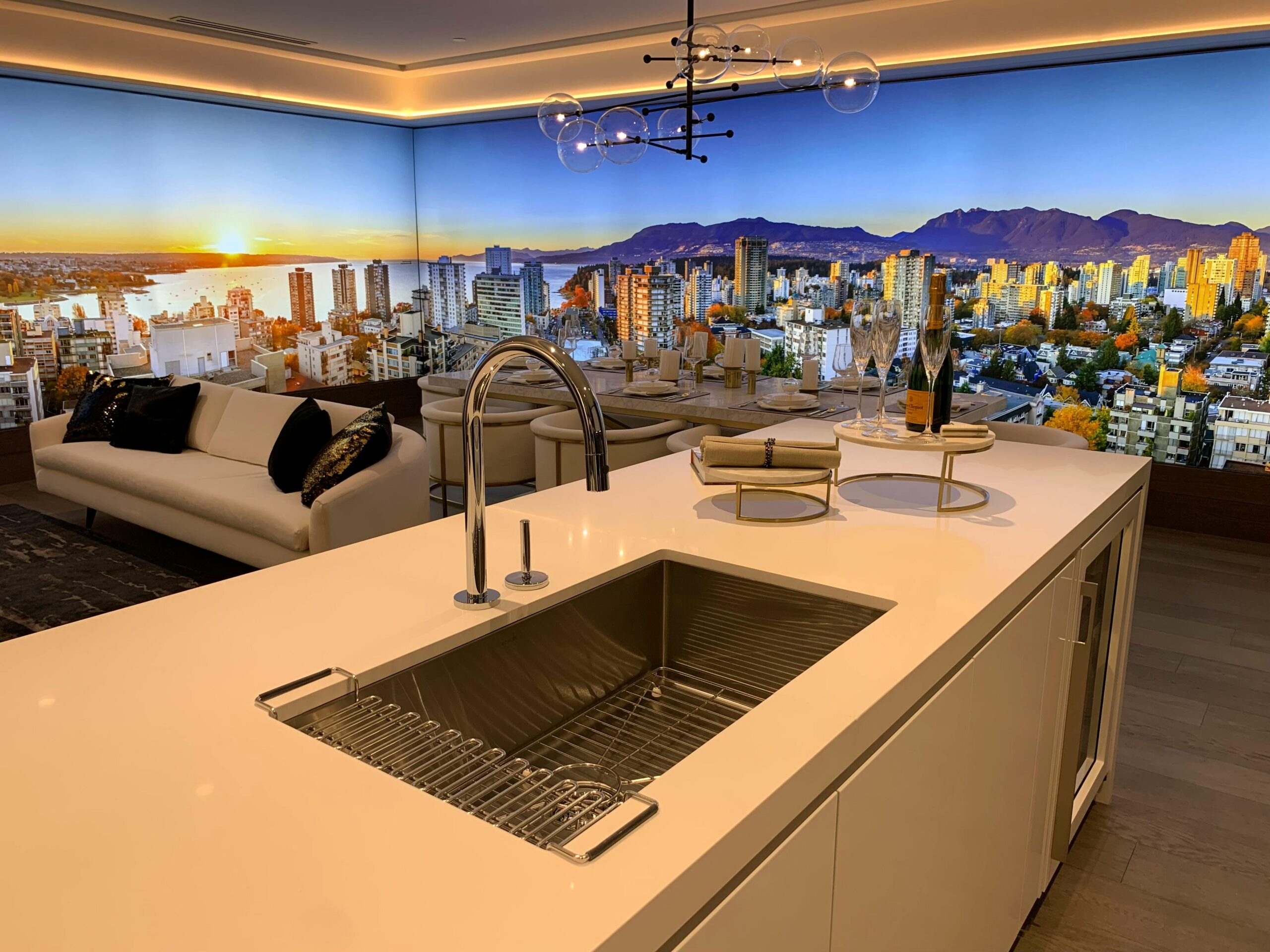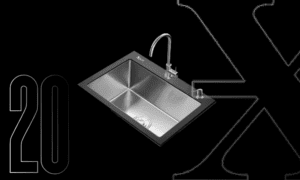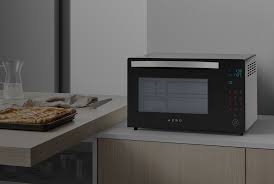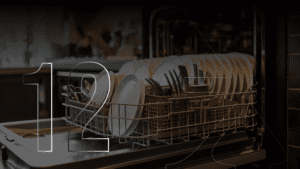A galley kitchen is all about efficiency. Narrow, linear, and optimized for movement, each inch counts. One of the most important decisions in a galley layout is choosing the right sink. The sink takes up counter and cabinet area, connects plumbing, impacts workflow, and affects how clean and organized the whole thing feels. Choose well which brighten and enhance features; choose poorly will create bottlenecks, wasted areas, and regular frustration.
This guide will help you understand what to search for, from size, shape, material, and installation types to smart accessories, so you can find a sink that fits your galley kitchen well. Whether you’re remodeling, putting in a small apartment, or just need better flow, those ideas are for you.
What Makes a Sink Galley-Friendly
Before choosing a specific sink, recall those key factors that count particularly in a galley kitchen:
- The counter area is precious: You want usable counter room for prep, drying, and perhaps small appliances. The sink should not dominate.
- Workflow/ergonomics: How far you walk between stove, sink, refrigerator, and countertop. Minimize unnecessary steps.
- Cabinet size and plumbing constraints: Depth beneath the sink matters, pipes, garbage disposal, and storage, all share that area.
- Cleaning & maintenance: Smaller sinks or single bowls may be easier to clean easily; fewer edges, less dirt.
- Aesthetics and material: Complements your kitchen’s style but is also long-lasting and proof against scratches, stains, and watermarks.
Popular Sink Types & How They Fit in a Galley
Here are sink styles that work especially well in galley kitchens, along with their pros and cons.
| Sink Type | Advantages in Galley Kitchen | Trade-Offs / Things to Watch |
| Single-Bowl Undermount | Gives the most uninterrupted basin space; no rim on counter so counter cleanups are easier; visually seamless. | Needs a strong countertop material; may reduce storage under the sink; not great if you often wash large items alongside smaller tasks. |
| Double-Bowl (or Dual Basin) | Can let you split tasks (one side wash, other rinse or prep); helps keep things organized. | Takes more width; divider reduces the effective width in each bowl; cleaning corners can be harder. |
| Corner Sinks | Good way to use under-utilized space; frees up linear counter space on both sides. | Plumbing is more complex; corner base cabinets can be less easy to access; might feel cramped when two people work. |
| Workstation / Multi-Functional Sinks | Sink + built-in ledges, drying racks, cutting boards, strainers etc.; maximizes utility in the sink zone. | More accessories = more components to maintain; some of these add cost; sometimes limit sink depth or shape. |
| Shallow or Compact Sinks | Great when cabinet depth or under-counter space is limited; lighter weight; less strain bending; efficient for small loads. | Less capacity for large pots; more splashing; may need deeper bowls if you often wash tall items. |
Size, Depth & Installation Tips
These are small, yet vital factors that decide whether or not your sink fits and functions flawlessly in a compact galley layout:
-
- Measure carefully: Note the sink’s width (side to side), depth (front to lower back), and peak (for under-sink plumbing). Always go to the away area for the tap, handles, or spray wand.
- Bowl depth: Deep bowls handle big pans and decrease splashing; however, they limit below-sink storage. Shallow bowls are less difficult for daily use but much less appropriate for tall cookware.
- Front-to- back dimension: Ensure your counter isn’t too narrow for the sink, a deep sink can also overhang or lessen workspace.
- Drain placement: A rear drain offers greater space under the sink, at the while a middle drain would possibly obstruct drawers or containers.
- Mounting kind:
-
- Undermount: Sleek, smooth, and easy and allows seamless countertop wiping.
- Drop-in: Simple and powerful to install; however, edges can collect dirt.
- Wall-mount: Rare for kitchens, best for bar or prep areas.
- Apron-front: Stylish and traditional, but needs proper cabinet support and space adjustment.
Material Choices: Durability & Look
Material affects both performance and maintenance:
- Stainless Steel: Very common. Lightweight, durable, and fairly affordable. Good with sound-damping treatments.
- Composite (granite, quartz blends): More elegant and may conceal stains and scratches better, but cost is higher, and they may require extra careful guidance.
- Fireclay/Ceramic: Great aesthetics; traditional appearance. Can chip or stain; heavy.
- Natural stone / concrete / copper: Very decorative and specific, but frequently more costly, may also want sealing, and might show wear.
In a galley kitchen, the aim is frequently durability and smooth cleaning. Stainless steel or a brilliant composite are often winners.
Accessories & Space-Saving Features
You can get more from your sink area by using smart accessories:
- Integrated accessories/workstations: Over-sink cutting boards, slide-in colanders, and drying racks. These provide you with more prep area without increasing the sink footprint.
- Roll-up or over-sink dish racks: Useful while you need the counter; stow them while carried out.
- Sink covers/boards: A custom cutting board that fits over the sink turns it into a countertop while not in use.
- Offset drains or rear drains: Free up storage space under the sink.
- Smart faucets / pull-down sprayers: Flexible reach helps with cleaning and rinsing; pull-down or extendable sprays are more useful in tight spaces.
- Noise/dampening pads: Especially for steel sinks, helps avoid echo and makes the kitchen more comfortable.
Layout Suggestions: Fit & Function in Galley Kitchens
Here are some ideas of a manner to position the sink and plan around it in galley kitchens:
- Create a work triangle: Keep the sink on one side and the range or oven on the opposite to ensure a clean workflow.
- Place close to a window: Natural light and airflow make cleansing less difficult and brighten the space.
- Pick the right length: Choose a single or compact double sink based totally on your cooking behavior—smaller sinks work properly in case you use a dishwasher regularly.
- Maximize area: Use the wall opposite the sink for cabinets or storage to avoid crowding the workspace.
- Optimize beneath-sink storage: use pull-out packing containers or organizers to apply each inch efficiently.
Practical Choices & Recommendations for Xpert Appliances Customers
Here are some smart sink choices for tight galley kitchens:
- Single-bowl undermount sinks (24–30 inches wide, 8–10 inches deep) save space and offer easy cleaning.
- For multitasking, mixed-depth double bowls work well, one shallow, one deep.
- Stainless metal or composite materials with a brushed end hide water spots and need much less maintenance.
- Workstation sinks with built-in boards or racks expand prep area.
- Ensure proper sealing and sound-dampening to keep your kitchen quiet and leak-free.
Conclusion
When working with a galley kitchen, the sink you pick out has a large effect on how usable, efficient, and fine the space is. Think of it not simply as that in which you wash dishes, however, but as a crucial work zone: prep, rinse, smooth, and perhaps even dry. Size, shape, material, and installation all rely similarly. Use smart accessories to extend features without the usage of greater space.
For Xpert Appliances customers, the pleasant sink is one that works hard without hogging space. Go compact wherein you must, add flexibility in which you could, and constantly measure cautiously. With the right sink, your galley kitchen can feel a lot more spacious and efficient and be a joy to work every day.
FAQs
Q: How can I maximize storage under a galley kitchen sink?
Use rear drains, pull-out bins, and door racks to utilize every inch efficiently.
Q: What material should I choose for durability and ease?
Stainless steel is hard to beat for durability, cost, and maintenance. Composite stone or high-grade materials offer styling advantages but may need more care and cost more.
Q: Do workstation sinks make sense for small galley kitchens?
Yes, they add extra prep space with built-in boards and racks without cluttering counters.
Q: What should I look for in faucets for a galley kitchen sink?
Choose pull-down or pull-out faucets with good reach and a durable, easy-clean finish.




